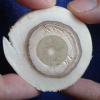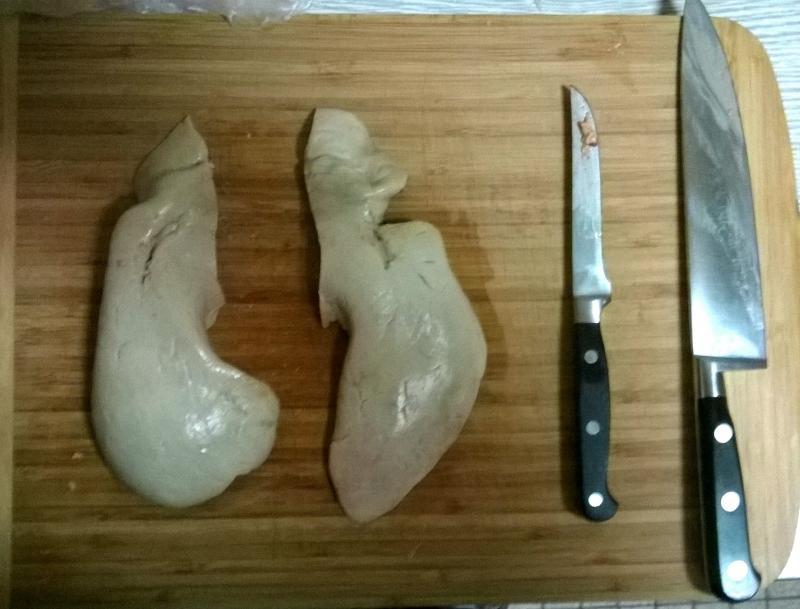-
Posts
838 -
Joined
-
Last visited
Content Type
Profiles
Forums
Store
Help Articles
Everything posted by jmacnaughtan
-
It's not really similar to a chiboust- it just makes the lemon curd that much lighter and creamier. A chiboust is always lightened with Italian meringue and set with gelatin. A vanilla chiboust is traditionally used to make a Saint-Honoré. An entremet is, essentially, a mousse cake. You have a cake or pastry base, a mousse to act as the body and at least one insert to add a new flavour and/or texture. This is assembled in a cake ring or mould, frozen, then unmoulded and finished. This is an example of a complex entremet, but they can be much simpler. A bûche (de Noël) is a Yule Log. Traditionally it's a rolled sponge, filled with buttercream or ganache, then decorated to look like a log. Modern ones are made like entremets using a half-cylinder mould, giving chefs much more flexibility about what they put in them. The whipped lemon curd works beautifully as an insert to an entremet or bûche (like this one, second down), or to fill a tart. The chiboust is much lighter, and could be used in the place of a mousse or to fill a tart shell. Or, even better, use lemon marmelade, lemon curd and lemon chiboust for a tart.
-
Mjx is right, and you'd also use the cutting method when you want a very short, crumbly finished product. It's probably a good idea to master both techniques.
-
That's what I tend to do as well. I already have more than enough egg whites kicking round the freezer without generating any more. Now you've mastered lemon curd, you could take it up a notch and make a lemon chiboust- adding gelatin to the hot egg/sugar/lemon mixture once cooked, incorporating the butter and while warm folding in an Italian meringue. Works beautifully in a lemon tart.
-
That looks like a pretty reliable recipe. I'd still add the butter after- you get a stiffer, more spreadable and manageable consistency when you blitz in cold butter rather than cook it all together. Otherwise, it can tend to be a little gloopy.
-
Agar is used completely differently, and gives a completely different result to gelatin. Unfortunately for you, there are really no other gelling agents that give the flavour release and melt-in-the-mouth texture of gelatin. If you're concerned about the ethics of it, I'd recommend abandoning gummy sweets and switching to chocolate.
-
By definition, a brine contains salt. If you want to get the cider flavour into a chop, you could reduce some cider and inject it. I'd probably just cook it normally and make a cider sauce. Much less effort, and the cider flavour will almost certainly be more pronounced than just soaking the raw chop in it.
-
That's the first time I've ever heard of anyone greasing a piping bag. Why would you do that?
-
Double boilers are fine if you have the time and are scared of curdling it. Some recipes actually call for boiling the juice, sugar and egg mixture, but I really don't like the texture you get from that. Take it to 80°C, strain and let it cool to about 40°C and blitz in the butter (lots of butter), and you're golden. To make it even better, add a touch of gelatin when it's hot, leave to rest overnight then whip it up. The gelatin makes it freeze stable, so you can use it in a bûche or entremet.
-
Keeping it at a simmer is fine, but you don't need a double boiler. Cook it like you'd cook a crème anglaise over direct heat, and pull it off and strain once it thickens (around 75-80°C).
-
Looks like you need better quality gelatin, either that or really powerful flavours in your sweets.
-
Beaten's fine. You just don't want the sugar in prolonged contact with intact yolks.
-
Not sure about the chemistry, but you'll end up with lumps of super-coagulated yolk if you leave them without mixing. It's one of the first things that gets drilled into you when learning pastry.
-
Cooking it over a water bath is more about dissolving the sugar and pasteurizing the whites. You really need to bake/dehydrate them to get a crisp result. Otherwise it'll just be like an Italian meringue, but with a leathery crust and no shelf life.
-
It's called the Rose Pouchkine. It was great- pistachio sponge, pistachio and amaretto cream, stone fruit compote and tvorog (Russian curd cheese) mousse. The petals were just coloured white chocolate. They have a dark chocolate version as well.
-
I've had this at Café Pouchkine in Paris. Absolutely stunning; I'm never even going to try and replicate it.
-
As far as I can tell, the recipes are the same but the technique differs. From what I've read in Greweling's book, for piped you pour the cream over unmelted chocolate, mix, leave to cool then agitate, and for slabbed you use melted, tempered chocolate and pour it directly into the frame. However, there are people around here who know a lot more about this than I do...
-
Try replacing it with dulce de leche. The amount used compared to the chocolate is tiny, so it shouldn't change much.
-
I'd recommend using something fairly stiff, like marzipan or gumpaste. Put a bit in each cavity (enough to fill, not much more), cover it with parchment paper and roll a rolling pin over the top. Otherwise, you could pour tempered chocolate in for solid pieces. There's no way that 31°C will be hot enough to damage it.
-
I recommend doing a bûche de noël. If you choose not to do a traditional rolled one, you can make the cake, mousse and insert(s) using whatever flavour you want. Just make a long bûche, freeze it solid then cut off the length you need and glaze it. They look spectacular as well. Philippe Conticini's ones look pretty good this year, if you need inspiration...
-

Your Daily Sweets: What are you making and baking? (2014)
jmacnaughtan replied to a topic in Pastry & Baking
Looks good. If it's a bit too dense, I think it's because your batter is too firm. Try softening the butter a little more before incorporating the other ingredients, it might help. -
If you want to speed it up (and get a better flavour), I'd recommend doing a dry caramel. You do need to keep an eye on it though.
-
I thought this would belong in this thread. I picked up a monkfish liver today, and it reminds me a lot of foie gras. It's also pretty big (the knife on the right is 12"). I'm just going to sauté it with butter, then make a sauce with cream, garlic and parsley, served with parsnips. Well, there's a first time for everything.
-
A mushroom and sage duxelle would work nicely. Or a tomato fondue. Or maybe caramelized onions. It's a shame it has to be vegetable, a pork stuffing could be excellent.
-

Is sorbitol (in chocolate bonbons) considered a preservative?
jmacnaughtan replied to a topic in Pastry & Baking
Sure they are. But normally sugar is added in quantities large enough not for it to be considered an "additive". But if its purpose is to preserve, then it's a preservative, and there's nothing wrong with that. -
No, use it in the same way. The flavour won't be as strong though, so you might want to add two.




